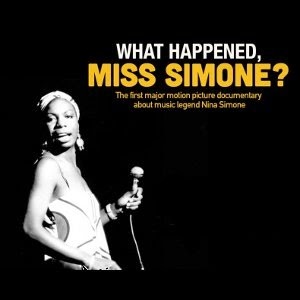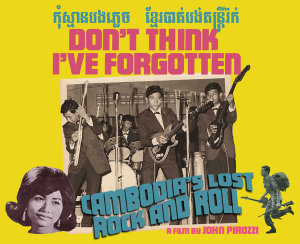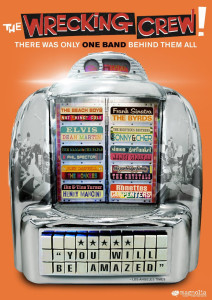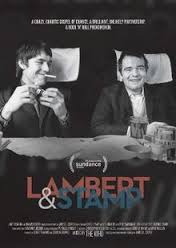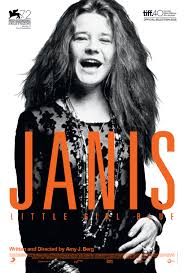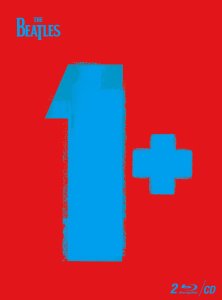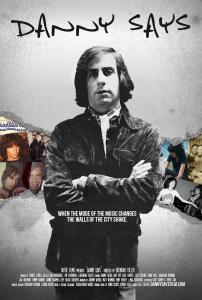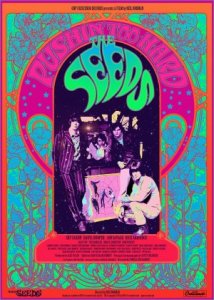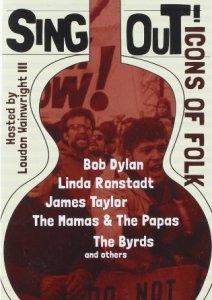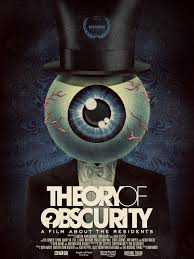There are a lot of music documentaries these days. Like reissues and rock history books (and my best-of-2015 lists for those are coming up in the next couple days), there are not just more being made than there were when the music they document was actually being made. There are more being made than anyone thought imaginable in the twentieth century, on subjects that no one would have thought would be of any interest to the moviegoing audience. Jobriath, the Cowsills, and Death are three very different acts, for instance, who’ve been the subject of recent rockumentaries.
The proliferation of music docs does mean it’s pretty hard to see them all, even if you go to film festivals and art houses, or catch up with them later on DVD (in part because not all of them make it to DVD, or even to film festivals and art houses). I haven’t seen the ones on Jobriath and the Cowsills, for instance, though I’ve heard about them. I’m sure I missed a bunch of 2015 music documentaries, whether I’ve heard about them or have yet to be aware they exist.
That explains, in part, why this list barely makes it to ten documentaries. I had to put a couple 2014 releases that were barely screened that year (and still haven’t been widely screened) to make sure there were ten selections. Maybe if I do a best-of-2016 list, I’ll have a few from 2015 to add at the end as a supplement, as I’ve done for my reissue and rock history book best-ofs. All of the following 2015 releases, however, deserve a mention, ranging from excellent to okay in quality. DVD labels are noted when available.
1. What Happened, Miss Simone? Nina Simone had one of the most unclassifiable discographies of all time, flitting between and combining jazz, soul, and pop, blending in some gospel, rock, world music, novelty, classical, and more. She also had a stormy personal life, getting into African-American activism as her career progressed, moving to Africa at one point, and displaying some quite erratic behavior. It’s a challenge to weave this into one documentary film, and no two-hour-or-so movie can cover all the bases of her life. But this does a good job with its subject, drawing upon some passionate first-hand interviews with close surviving family and associates. There are also excerpts from a wealth of archival performance clips, most of which are so good and exciting that you wish there was a multi-volume set of the complete versions. (However, the absence of her explosive 1969 performance of “Four Women” in Central Park—included in the DVD part of the CD/DVD release The Soul of Nina Simone—is surprising, as it’s one of the greatest performances filmed by anyone.)
Most impressive to me, however, were the numerous revealing personal letters and documents that are shown and partially recited, relaying valuable information and perspectives that were previously unearthed. There’s hardly any coverage of her post-1970s years (although she lived until 2003), which, to be heartless, is absolutely the correct decision, as her career wasn’t all that interesting for her last quarter-century or so. Just as there’s no room for sentiment in big business, there’s no room for sentiment in documentaries, or at least not so much that they should distract from or dilute what’s most important.
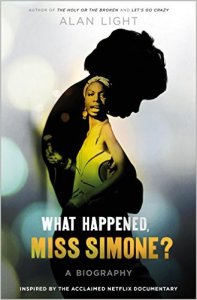
A biography of Nina Simone with the same title as the film is scheduled to come out in February 2016.
2. Don’t Think I’ve Forgotten: Cambodia’s Lost Rock & Roll. In the 1960s and early 1970s, Cambodia had an active and fairly vibrant rock scene. This was curtailed—a word that’s far too mild for the brutality that took place—when Pol Pot and the Khmer Rouge came to power in the last half of the 1970s. This film’s significance extends far beyond the parameters of the usual rockumentary, illustrating how many careers, and quite a few lives, were ended (and otherwise damaged) by the new regime’s virtual banning of entertainment that reminded people of the pre-Khmer Rouge days in the slightest. Interviews with numerous surviving musicians, their families, and friends evoke both the joyful, relatively carefree heyday of Cambodian rock and the horrors of its virtual disappearance in the wake of the Khmer Rouge’s clampdown. To its credit, the film also examines some of the abuses and weaknesses of the dictatorial government preceding the Khmer Rouge.
I have just a couple criticisms of what is overall a commendable portrait of a scene that was nearly totally unknown in the US and Europe (and remains little known now, though there are now a few reissues of vintage Cambodian rock). There is virtually no actual archive footage of Cambodian rock; my guess is that virtually none exists. More critically, I wish somewhat more attention had been paid to the music itself, in addition to the social context. Cambodian rock is, to Western ears at least, a very unusual hybrid of indigenous Cambodian music and Western forms like surf, Merseybeat, girl group, soul, and psychedelia, often delivered with twangy guitars, cheesy organs, and stratospherically high female vocals. There’s little discussion of what makes Cambodian rock unique, or at least distinct from the Western rock by which it was so strongly influenced. You do hear a lot of it on the soundtrack, which is available on the CD compilation of the same name on the Dust-to-Digital label. (Technically this film is a 2014 release, but it did not make it to much of the festival/art house circuit until this year.)
3. The Wrecking Crew! (Magnolia Pictures). Forever-in-the-works documentary on Hollywood rock session players of the 1960s and early 1970s culls from interviews done with a wealth of instrumentalists, producers, arrangers, engineers, and artists (including some real big ones, like Brian Wilson, Nancy Sinatra, and Cher). This could have become a mess considering how many pieces of the story needed to be assembled. But it’s ordered and edited in a way that both touches on the important aspects of the scene and can be enjoyed by both ‘60s rock aficionados and more general rock fans. A number of the musicians (who were often jazz players) give the sense that they were doing this just for the money and felt that lending their chops to mere rock sessions by other artists was beneath them. While that’s a bit of a drag for the many millions who cherish many of the records on which they played, this at least didn’t keep them from doing their best and making memorable contributions to many classics, even if some thought they were dumbing down their playing.
The DVD has a lot more extras than most such releases – more than six hours, in fact, of interviews that didn’t make the film, often with people barely or not represented in the final cut. These deleted scenes range from fascinating behind-the-scenes stories to dull recounts that are hard to sit through, but increase the production’s value as an important archive of oral history. Note too that a good coffee table paperback, also titled The Wrecking Crew!, was issued in 2015 in conjunction with the documentary.
4. Lambert & Stamp (Sony). Documentary on the Who’s managers in their mid-‘60s to mid-‘70s prime, Kit Lambert and Chris Stamp. Being a big fan of the Who during this time, and even having written a book about their early-‘70s work, it could be expected that my interest in this subject would be strong. And I did like the film, but feel like it impressed some other Who fans more than it impressed me, for some snobbish reasons. Although there’s a great deal of archive footage, I’d already seen virtually all of it through my fandom and research. There are colorful interviews, most notably extensive ones with the late Chris Stamp, which are interesting in that he was the lower-profile part of the Lambert-Stamp duo. Yet these often recycle stories that I and other committed Who fans have already heard (sometimes several times over), albeit in a pretty entertaining fashion. Some of the bang-bang editing and montages were flashier than they needed to be, as well. These criticisms might give you a less positive impression of the film than it deserves: it’s largely informative, and very enjoyable. But I did feel like it was more apt to blow away non-Who obsessives, or people just learning about the group, than those who’ve followed them closely for a long time.
5. Janis: Little Girl Blue. Straightforward hour-and-45-minute documentary on Janis Joplin. Are there major revelations in this? No. Are there notable gaps that are filled in by books on Janis and her scene? Yes. But y’know what? That doesn’t matter too much, because snobbish comments like “they should have talked more about Albert Grossman” or “they should have examined how Cheap Thrills had to be pieced together from agonizing recording sessions and live performances” aside, it’s a well-done and entertaining overview of her life and career. For snobs like me who’ve read a great deal about her and seen about all there is to see of her performance footage, the most significant aspects are interviews with quite a few of her associates (including members of Big Brother and her post-Big Brother bands, as well as her sister and brother), as well as numerous little-seen photos (especially from her early years). But regardless of how much you know about Joplin, it covers most of the major bases in a respectful fashion, mixing in lots of 1967-70 performance and interview clips. If this didn’t come to your town to play in theaters or only played in your town briefly, don’t despair; it will be broadcast on PBS next year as part of their American Masters series.
6. The Beatles: 1+ (Apple). Not exactly a music documentary, this two-DVD/one-CD set includes fifty short films featuring the Beatles. One DVD has one film for each of the 27 songs on the CD (which repackages their greatest-hits compilation 1); the other DVD has 23 more films, some of them for songs on the CD, some of them for songs not on the CD. That’s the basic dry information, but the important thing to know is that the majority of the fifty short films are promotional films the Beatles made back in the 1960s, all (with the exception of “A Day in the Life”) for A-sides and B-sides of singles. In other cases, some vintage live or mimed clips that weren’t specifically made as promo films are used; in the least interesting cases, there are way-after-the-fact DVD-age videos that were constructed specifically for repromotional use. But the main attractions are those promo films, which have never before been officially issued together in a DVD package (though some are seen in part or full in the Anthology documentary).
Almost ten years ago, I wrote in The Unreleased Beatles: Music and Film: “While a two-DVD set of every single promo film, all multiple versions included, would not make for the most exciting Beatles archival video release, it would certainly be a pleasant and valuable one…numerous bootleg DVD releases conveniently assembl[e] copies of most or all of them into a single package, though it would be far better to have an anthology that mastered the films from the best available sources.” Now, to my surprise, it’s here. Did they read my book and take my suggestion?
This being a Beatles archive release, of course it isn’t perfect or complete. It’s still missing some of the multiple versions of promos they did for some songs, and some of the recently devised films for songs that never got promos are hokey. “Eight Days a Week” is a compilation of footage built around their 1965 Shea Stadium concert, for instance, though they didn’t perform “Eight Days a Week” there. “Free As a Bird” and “Real Love” date from the 1990s, as they were recorded by the three surviving Beatles in association with the Anthology projects.
Commentary tracks by Paul McCartney and Ringo Starr are unexpected bonuses, though as it turns out they only comment on a very few of the clips, and Ringo’s “introductions” (as they’re termed) are exceptionally awkward. As some compensation, the bound-in mini-book of liner notes is more comprehensive than expected, including some fairly obscure information about the filming of the promo videos in particular. As expected, the videos look better than they do on most bootlegs, though the difference between most of these and most bootlegs featuring the material actually isn’t that great.
So – is this a winner? Yeah, basically, though I’m not as big a fan of mimed promo films as many Beatles fans are. Most of them are mimed in artificial circumstances, or have the Beatles just walking around or doing silly activities while music plays on the soundtrack, in common with many music videos then and now. Still, it’s a big chunk of their video history, and now it’s largely represented on an above-board compilation. The absence of some of those multiple versions does mean that the missing promos will continue to circulate on bootleg or other media indefinitely. It also means this isn’t quite definitive, and while the addition of all those multiple versions would have made for tough watching all at once, there was room for them on these discs. And it’s overpriced, especially for those many of us who already have all 27 famous songs on the CD, and don’t need them in yet another format.
7. Danny Says. From around the mid-1960s to the end of the 1970s, Danny Fields was in the middle of a lot of action as a journalist, publicist, record company employee, and manager. In those capacities, he played minor-to-major roles in the careers of the Doors, the Velvet Underground, the MC5, the Stooges, Linda McCartney, and the Ramones, among others. That doesn’t mean he’s as interesting as any of those artists, but he has a lot of interesting stories, and he’s a good storyteller. That’s the foundation of this documentary, which is embellished by many vintage still photos, snippets of interviews he conducted, and first-hand on-camera interviews with those he worked with, though interviews with Fields are at the core. This is probably only going to appeal to a pretty specialized rock fanatic, not a general audience, which is not a criticism: fans with a wide knowledge of this time and the scenes in which Fields was immersed will enjoy this. There’s virtually nothing about his life after the ‘70s (though he’s still around), but like the similar approach used in the Nina Simone documentary, it’s wise and appropriate to focus on his truly significant years.
8. The Seeds: Pushin’ Too Hard. I admit, as with the Residents documentary (see #10), this might have ranked higher if I were more of a fan of the documented act. Still, it’s quite a feat to get a nearly two-hour film out of the story of a band for whom not many archive clips survive. This is done by interviewing quite a few people in the band or with some association with the group, along with quite a few still photos. Fortunately two of the people interviewed were the two surviving members of the Seeds’ primary lineup, keyboardist Daryl Hooper and guitarist Jan Savage. They’re the guys who carry this film, much of whose main narrative rests on the short time in which they were a hot L.A. mid-’60s garage/psychedelic band, known best for “Pushin’ Too Hard” and “Can’t Seem to Make You Mine.” Those would have charted higher nationally had they taken off in more markets at once, and the band themselves would have had a better chance of making it bigger had lead singer Sky Saxon been more stable. There are some gaps in this documentary (especially in the period in the late-’60s when there was some turnover in personnel as they headed toward their demise), but many of those are filmed by film producer Alec Palao’s liner notes for recent Seeds reissues on the British Ace label. Like Don’t Think I’ve Forgotten, this is technically a 2014 release, but was seldom screened before this year, when it continues to make rounds on the rep circuit.
9. Sing Out! Icons of Folk (S’More). An odd, almost-hour long collection of vintage folk and folk-rock performance clips spanning 1952 (the Weavers) to 1977 (Loudon Wainwright III, who also hosts this program with brief spoken intros). The other footage mixes folk revival clips predating folk-rock (most notably Bob Dylan’s “Blowin’ in the Wind”) with folk-rock by the Mamas & the Papas, Byrds, and the Stone Poneys (with Linda Ronstadt); mid-to-late-‘60s folk by Phil Ochs, Chad Mitchell, and Peter, Paul & Mary; and even some soul-folk (the Staple Singers), country-folk (June Carter & Johnny Cash), and early singer-songwriter performances (James Taylor, Arlo Guthrie). The audiovisual quality of the clips, oddly, is sub-YouTube, though this was broadcast on public television. What truly makes this more of a folk revival DVD than a folk-rock one (and a more worthwhile DVD overall) are the 17 bonus clips, which—far from being extraneous—comprise some of the rarest and most interesting material on the disc. These include early-to-mid-‘60s performances by Judy Collins, Judy Henske (“High Flying Bird”), Pete Seeger, Gale Garnett, the Rooftop Singers, and Ian & Sylvia, along with some less notable wholesome folk revival combos.
10. Theory of Obscurity: A Film About the Residents. It’s a little tough reviewing, even in capsule best-of forms, films you know might deserve a more enthusiastic recommendation or higher placement on the list based on the cinematic quality. Not being too much of a Residents fan—interested enough to see this with some friends, but not so much to avidly seek it out on my own—I kind of feel this way about this entry. It does tell you a lot about the avant-rockmakers’ odd career, with quite a bit of footage, some rare, and quite a few interviews, as well as some coverage of how their canny merchandising has sustained interest in this most uncommercial group for decades.
How do you have interviews with or about a group that famously has never revealed the identity of their members, you ask? Well, that ties into something about the documentary that didn’t entirely please me: the feeling that some of the Residents associates being interviewed might be band members, or know more about the musicians than they’re letting on, but coyly fall short of divulging as much hard information as they could. The chronological sequencing of the film is haphazard, and there are too many extended clips of theatrical sequences from recent concerts, leaving me feeling by the end that the film had gone on too long, or at least was exhausting my patience. Residents fans, however, might find those attributes virtues rather than drawbacks. Quite a few Residents cultists are visible and/or interviewed in the film, too, which is likely to both appeal strongly to the converted and make some of the unconverted wonder why there’s so much fuss.
For those of you reading the day this was posted: tomorrow I’ll post a list of my top rock books of 2015, and on Thursday, December 31, I’ll post a list of my top rock reissues of 2015. For those of you not reading the day this was posted — just click on the links that I’m putting in the previous sentence at the end of that week.
